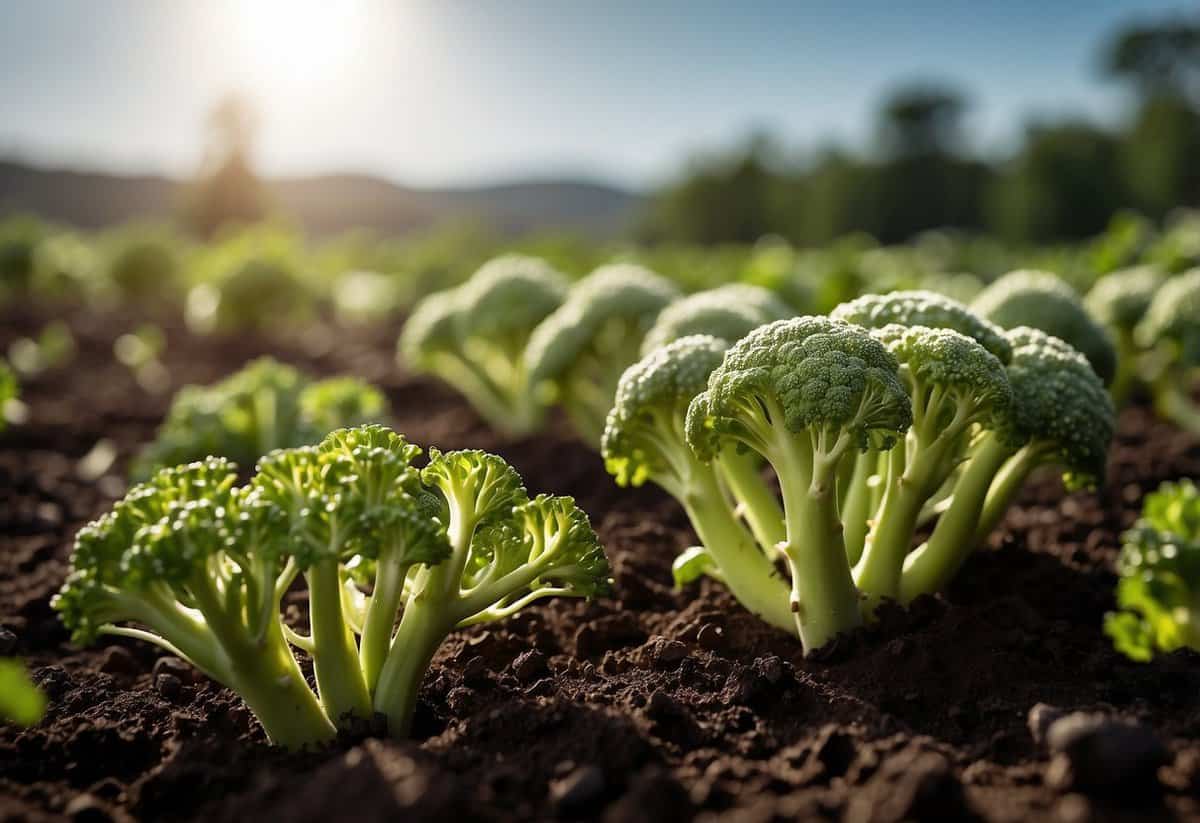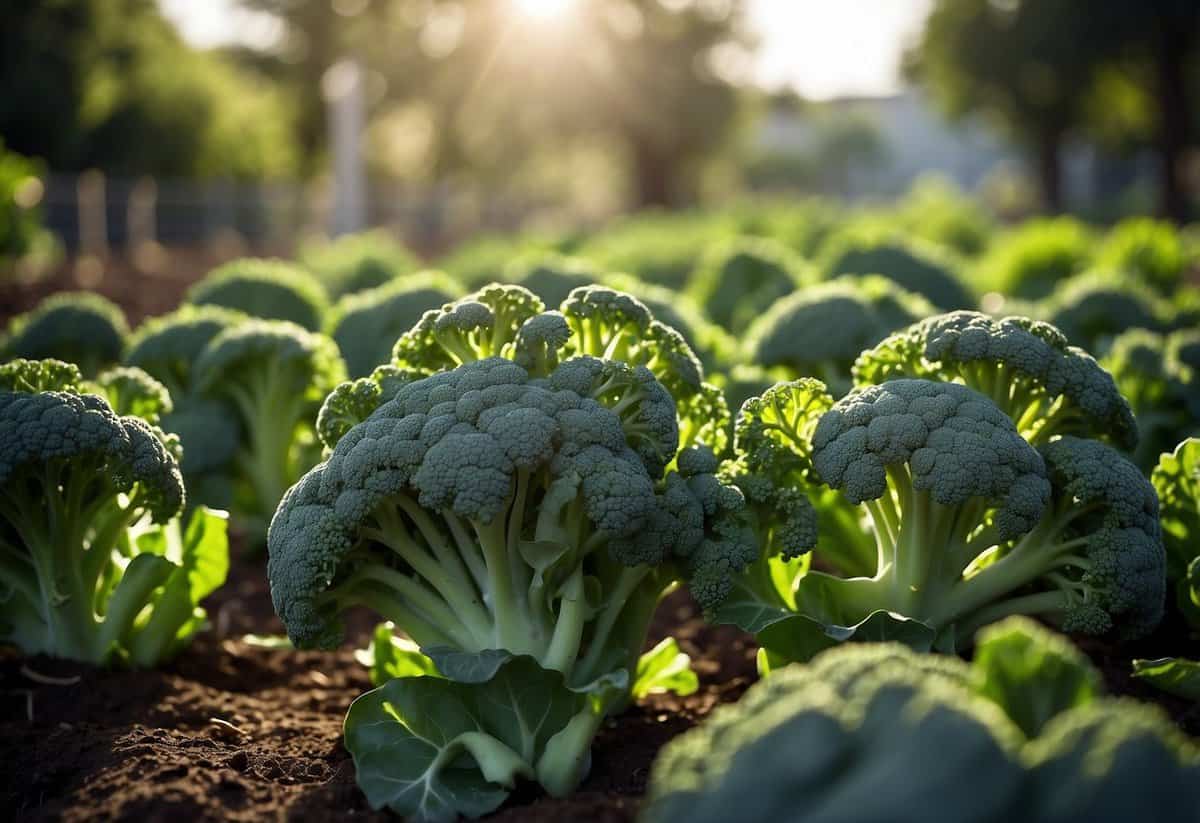Broccoli Garden Tips: Easy Steps for a Bountiful Harvest
Growing broccoli in your garden can be a rewarding endeavor, providing you with fresh, nutritious vegetables straight from your backyard. Whether you’re a seasoned gardener or new to planting, there are some easy tips and tricks to help your broccoli thrive.

Why is broccoli a great choice for your garden? It’s not only one of the most nutrient-rich vegetables, but it’s also relatively easy to grow with the right care. By ensuring you follow some key guidelines, you can enjoy a bountiful harvest season after season.
1) Choose the Right Location

When growing broccoli, picking the right spot is key. Broccoli loves cool weather and needs at least six hours of sunlight each day.
Make sure the soil is well-draining and slightly acidic, with a pH level between 6.0 and 7.0. A sunny spot with good soil will help your broccoli thrive.
Avoid placing your plants in areas prone to flooding or very wet soil. This can harm the roots and stunt the growth of the broccoli.
2) Test Your Soil pH

To help your broccoli thrive, you need to test your soil pH. Broccoli likes soil that is slightly acidic to neutral, with a pH between 6.0 and 7.0. You can use a soil test kit from your local garden center.
If your soil is too acidic, add garden lime to raise the pH. If it’s too alkaline, add sulfur to lower it. For detailed steps on adjusting pH, check out this guide on soil pH.
Testing and adjusting your soil will give your broccoli the best chance to grow strong and healthy.
3) Start with Quality Seeds

Using high-quality seeds is key to growing strong, healthy broccoli. Look for seeds from reputable suppliers.
New seeds usually have better germination rates. If you’re using older seeds, plant 2-3 per hole to increase your chances.
Make sure to label your seed trays with the variety and planting date to keep track of your plants.
4) Provide Adequate Spacing

When planting broccoli, spacing is key.
Place the seedlings about 18-24 inches apart. This distance allows each plant ample room to grow without competing for resources like sunlight and nutrients.
Keep rows 24-36 inches apart for better airflow. Good airflow helps prevent disease and makes it easier to care for and harvest your plants.
Adequate spacing ensures your broccoli grows big and healthy.
5) Water Consistently

Broccoli needs about 1 to 1.5 inches of water per week. Water your broccoli plants every 2-3 days during early growth. As they mature, you can switch to watering every 3-4 days. Use a deep watering method to ensure the roots get enough moisture. Morning watering is ideal to help prevent disease. Mulch around your plants to retain moisture.
6) Use Mulch to Retain Moisture

Mulch helps keep soil cool and moist, which is great for your broccoli during hot weather. Use organic mulch like straw, wood chips, or compost.
Mulch also helps regulate soil temperature and suppress weeds. It makes your gardening work easier and benefits your broccoli plants’ growth.
Spread a layer of mulch around your broccoli plants for the best results. This simple step can make a big difference.
7) Protect from Pests

Pests can be a real problem for your broccoli garden. To keep them at bay, try using a garlic spray. Blend garlic cloves with water and a bit of dish soap, then strain and spray on your plants.
Neem oil is another solution. Mix it with water and a few drops of dish soap before spraying.
You can also give your plants a blast of water with a hose to remove insects. For a more natural method, use hot pepper spray to keep pests away.
8) Regularly Harvest the Heads

Harvesting broccoli regularly keeps your plants productive. When the heads are firm and tight, use a sharp knife to cut them off. Leave a few inches of the stem attached.
After you harvest the main head, watch for smaller side shoots. They can be cut in the following weeks. This encourages continuous production of broccoli.
Store your freshly cut broccoli heads in the refrigerator. Use them within five days for the best flavor and texture. Continuously harvesting keeps your garden thriving and ensures you get the most from your plants.
9) Use Organic Fertilizers

Using organic fertilizers can greatly improve the health of your broccoli plants. They provide essential nutrients without the risk of harming the environment.
Compost and manure are excellent choices. You can also use fish emulsion and coffee grounds. These natural options help boost nutrition and improve soil structure.
Experiment with different organic fertilizers to see what works best for your garden. This approach ensures your broccoli plants thrive and produce a bountiful harvest.
10) Rotate Crops Annually

To keep your broccoli healthy, rotate crops every year. Planting broccoli in the same spot repeatedly can lead to soil diseases and pest build-up.
Switch where you plant broccoli with other vegetables like tomatoes or carrots. This helps break pest and disease cycles, keeping your garden healthy.
Rotating crops also improves soil health by balancing nutrient use. Try
a simple rotation plan to make the most of your garden!
Why Grow Broccoli

Growing broccoli in your garden has many benefits. This nutritious vegetable is rich in vitamins and minerals that boost your health.
Nutritional Benefits
Broccoli is packed with vitamin C, vitamin K, and fiber. It also contains antioxidants, which help protect your body from harmful free radicals.
Easy to Grow
Planting broccoli isn’t hard. It thrives in cool weather and can be planted in early spring or late summer. Even beginners can have success with this plant.
Versatile in the Kitchen
You can use broccoli in a variety of dishes. It can be steamed, roasted, or eaten raw in salads. Its mild flavor makes it a versatile ingredient for many recipes.
Garden Maintenance
Broccoli plants need full sunlight and well-draining soil. Regular watering and light fertilization help the plants grow strong and healthy. This makes it an easy addition to your garden.
Here’s a quick table on key care tips:
| Care Tip | Details |
|---|---|
| Sunlight | Full sun (6-8 hours per day) |
| Soil | Slightly acidic, well-draining |
| Watering | Keep soil consistently moist |
| Temperature | Best between 65°F and 70°F |
By growing broccoli, you are adding a healthy and delicious option to your meals while enjoying the satisfaction of home gardening.
Soil Preparation for Broccoli

Proper soil preparation is essential to growing healthy broccoli. You need to focus on the soil type and adding organic matter to ensure optimal growth.
Ideal Soil Type
Broccoli thrives in well-draining, loamy soil. This type of soil is a mix of sand, silt, and clay. It retains moisture well yet drains excess water efficiently. Aim for a soil pH between 6.0 and 7.0, as this range is ideal for nutrient absorption.
Testing your soil pH can help you adjust it if needed. If the pH is too low, adding lime can raise it. If it’s too high, sulfur can help lower it. These adjustments improve nutrient availability and plant health.
Soil Amendments
To enrich your soil, incorporate organic matter like compost or aged manure. This improves soil structure and adds essential nutrients. Organic matter also increases the soil’s cation exchange capacity (CEC), which helps retain nutrients for plant roots.
Till the soil to a depth of about 12 inches with a garden fork or tiller. This loosens compacted soil and enhances root growth. After tilling, use a rake to smooth the surface and prepare it for planting. Adding a balanced fertilizer, such as a 10-10-10 formula, provides nitrogen, phosphorus, and potassium, essential for broccoli growth.
Planting Broccoli

Planting broccoli can be a rewarding experience if you follow a few key steps, including choosing the right variety and mastering the planting techniques.
Choosing Broccoli Varieties
When selecting a broccoli variety, consider your climate and personal preference. Not all broccoli tastes the same, so choose one that suits your taste buds. Some popular choices include Calabrese, known for its large heads and quick growth, and Purple Sprouting, which thrives in cooler climates.
If you live in a warmer region, Waltham 29 could be a good option as it is heat-tolerant. For those new to gardening, Green Magic is an easy variety to grow and tends to be more forgiving.
Look for seeds at your local nursery or online gardening stores. Check the packets for specific growing instructions and hardiness zones to ensure optimal growth.
Planting Techniques
Start broccoli seeds indoors 6 to 8 weeks before the last frost date. Use a seed-starting mix and plant seeds ¼ to ½ inch deep. Keep the soil moist and within temperatures of 45°-85°F for best germination.
Transplant the seedlings when they are 4-6 inches tall and have two sets of leaves. Space them 12-20 inches apart in your garden to ensure proper growth. After transplanting, water well and add a layer of mulch to maintain soil moisture and temperature.
Make sure the site receives full sun and has rich, well-draining soil. Fertilize young plants three weeks after transplanting using a low-nitrogen fertilizer like a 5-10-10 formula. This will help the plants develop strong roots and healthy heads.







